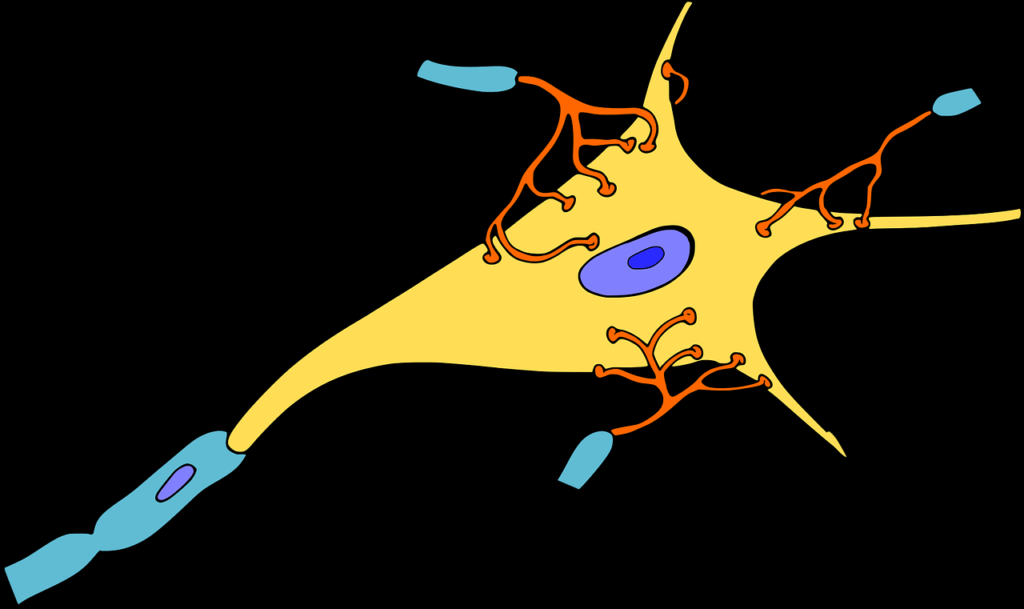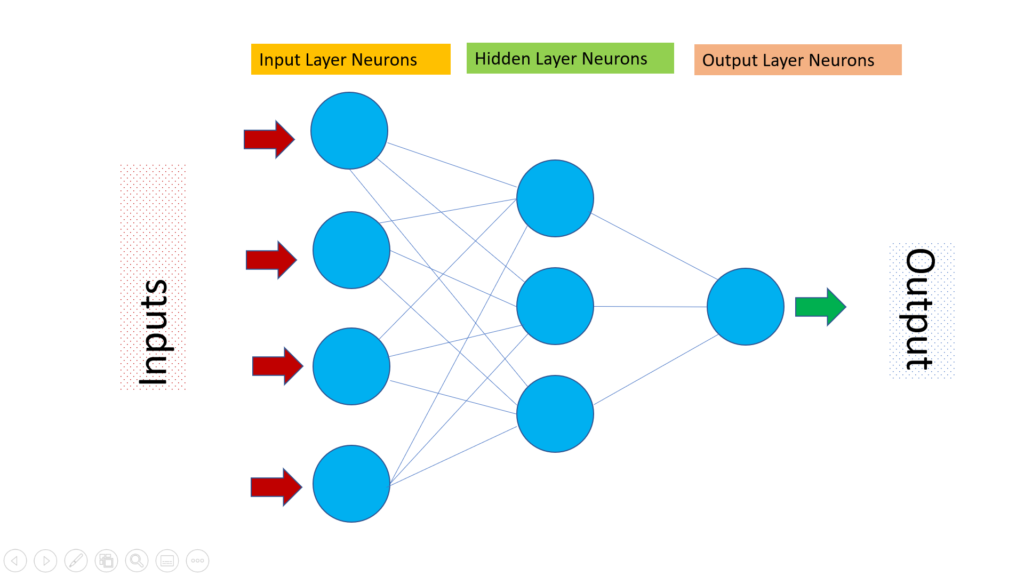- Introduction to Artificial Intelligence
- Installing the necessary software
- Formatting the Data
- Setting up the Library
- Loading the Data
- Building the Network
- Compilation, Execution and Evaluation of the Model
- Summary
Introduction to Artificial Intelligence
Artificial Intelligence is inspired by Human Intelligence, and therefore makes it a powerful tool for learning and and developing intelligent machines.
The learning process is inspired by how our brains learn to recognize things. Our brains have interconnected neurons. millions of these neurons pass on information and a final decision is made.

This is how a Biological Neuron looks like. The dendrites pick up the signal and pass on to the next Neuron and so on. The spatial arrangement and how Individual Neurons interact with each other helps us learn new things and helps us in making decisions.
As Humans we have amazing ability to analysis and interpret things. However our abilities is restricted to our brain processing power and further restricted by the multitasking nature of our living.
Inspired by the similar learning scientist realised, that machines can be trained in a similar way as humans learn; and make them specialise to do specific task. With the rise in high performance computing, the science of Artificial Intelligence Boomed and has found place in every sphere of life.
One of the most common use of Artificial Intelligence is to Develop Prognostic models e.g. Can we predict if a person will get cancer based on DNA or other Clinical parameters; which drug will work best, will the patient relapse etc. These things are becoming part of Precision/Personalised medication. Additionally such models are used in all spheres of Science; Disease Outbreaks, Agriculture Prediction, Metrological Prediction and even Self Driven Cars
Artificial Neural Network
Similar to our brain, artificial neural networks are interconnected layers of neurons. There are various architecture of Artificial Neural Network. In this course, we will limit our study to feed forward neural network. Below is the illustration of how the network looks like

Input Neuron
Starting from left, the 1st layer is the Input Layer. The network is provided with information through this layer
Hidden Layer
There can be any number of Hidden Layer, If you see the Neurons (marked in circle) are connected among layers. There is a weigh ( a value ) associated with each connection. Initially it starts with random numbers, but as the training progresses, the weight change so as to make correct predictions.
Output Layer
Most problems are binary in nature. Therefore there is a single neuron in the output layer. However for certain problems there may be more than 1 neurons in the output layer.
Training the Artificial Intelligence Model
We wont go in the mathematics around the training process, as it is way too complicated, however we will train you in subsequent chapters on how to successfully develop a prognostic model using Diabetes dataset. It is the same dataset we use for Essential bio-statistics for biologist using Excel
We strongly recommend you to complete that free course, so that you can have a better understanding on the problem we are trying to solve.
Requirements
Essential: Interest
Desirable: Some understanding of Coding. We will be using Python. The whole code is of 12 lines only, and we will be discussing each line in details as we move forward. However, if you can learn basics of Python, it will be much easier.